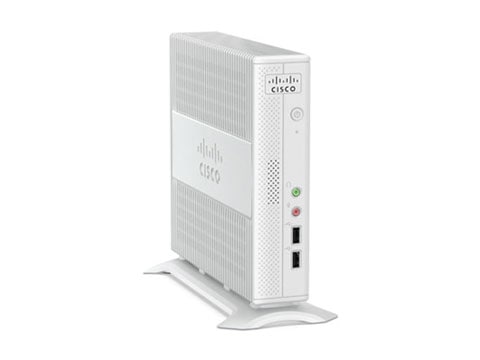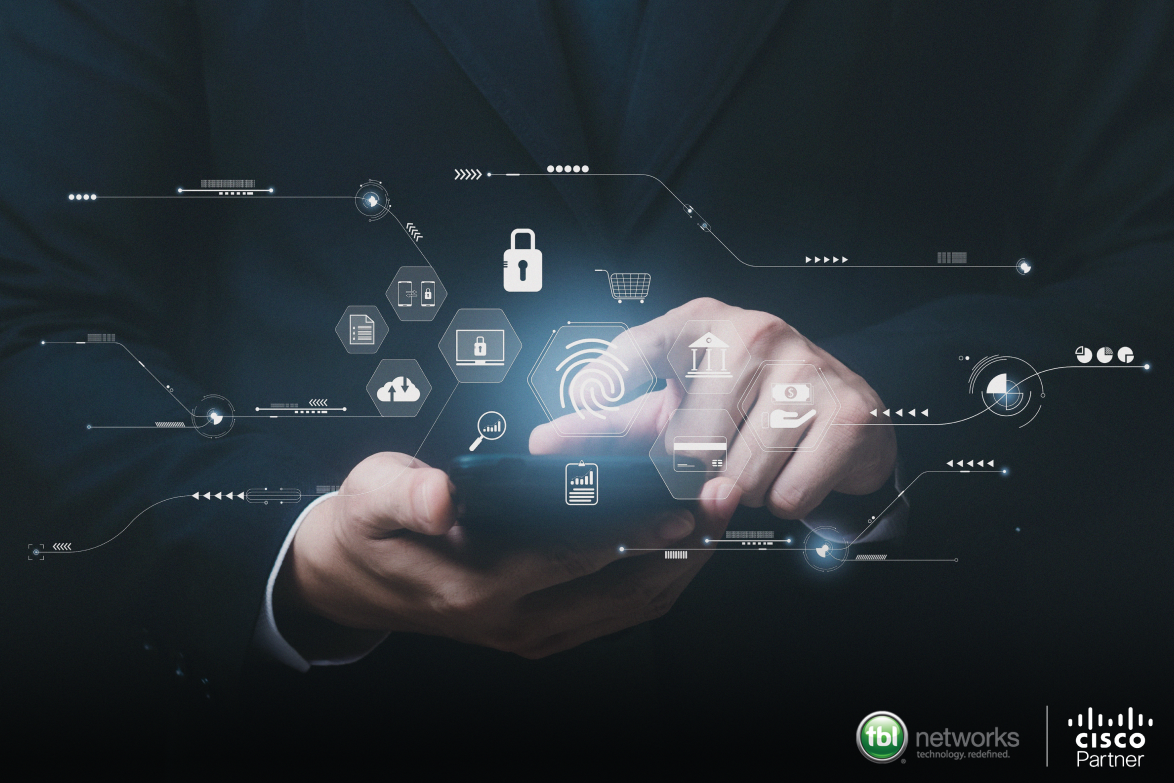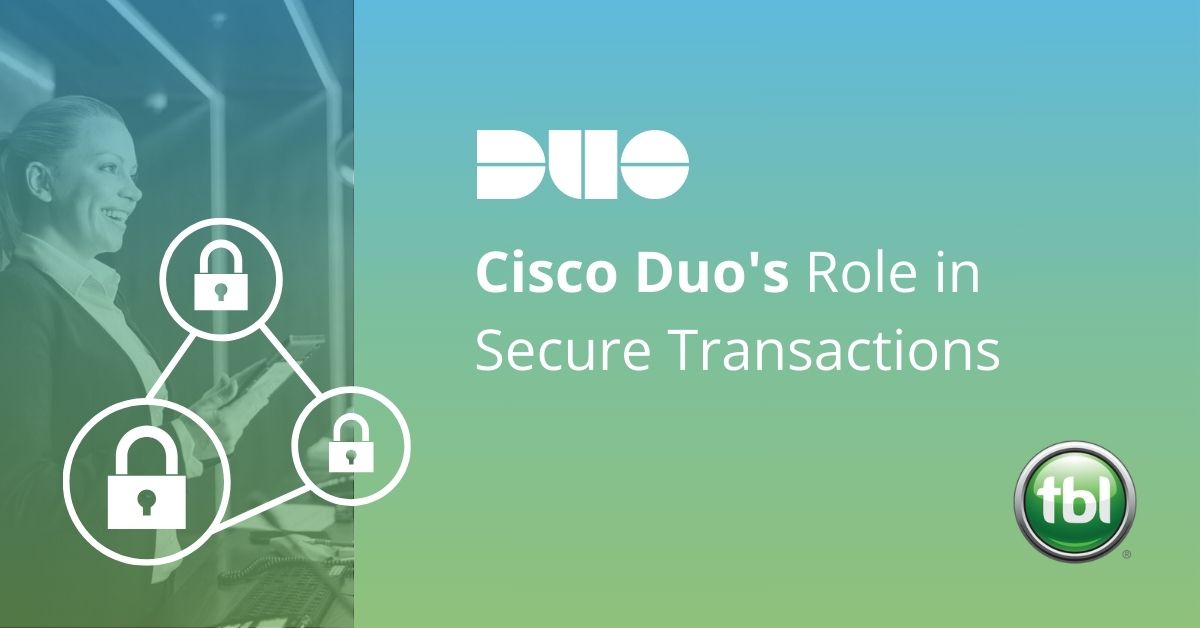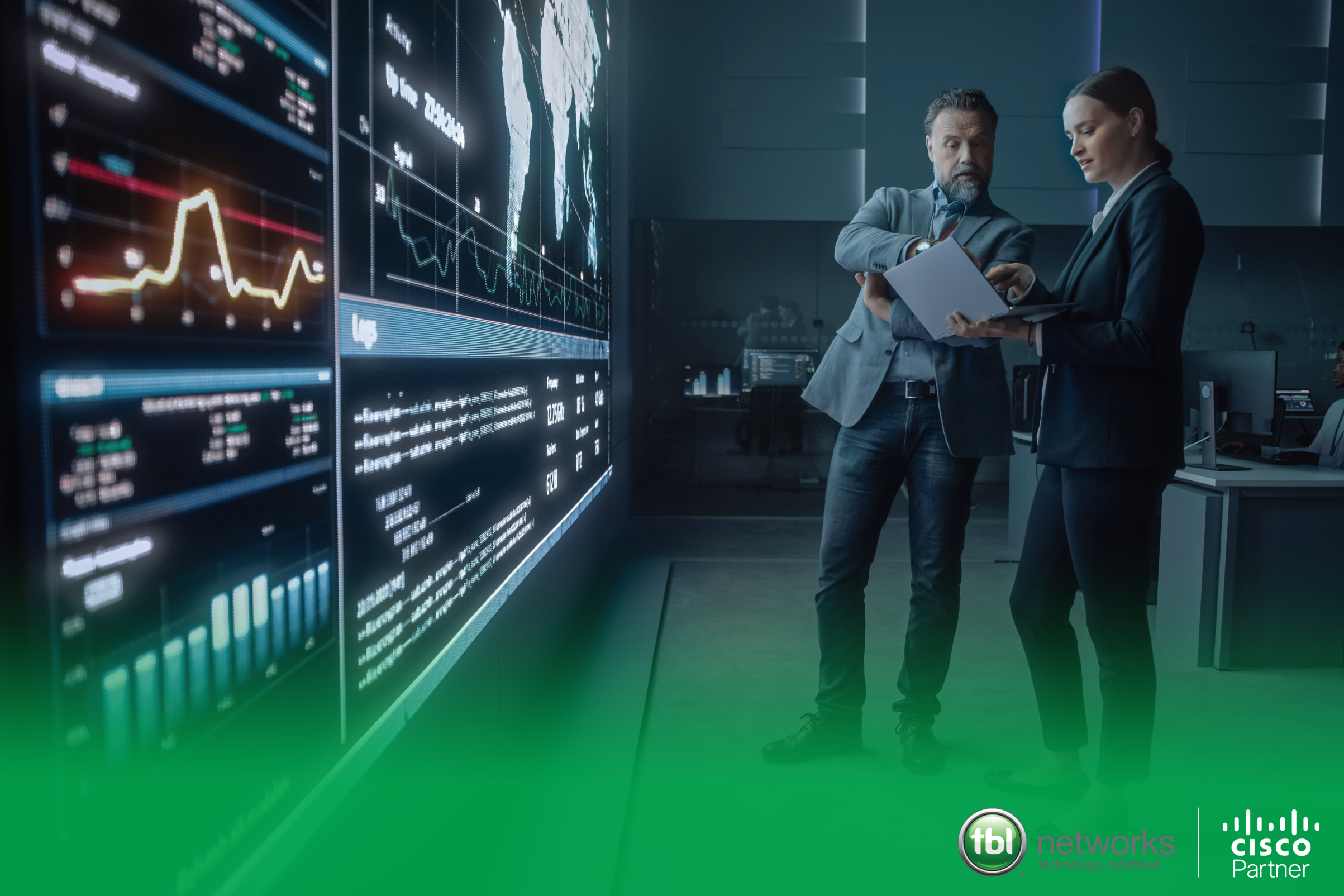In an era where digital footprints are as valuable as physical assets, the financial sector stands at a pivotal crossroads. The increase in cyber threats targeting financial institutions isn’t just a statistic; it’s a pressing reality demanding sophisticated defenses. At TBL Networks, we don’t just observe these changes; we lead the charge in combating them, deploying advanced solutions like Cisco Duo to fortify our client’s defenses.
Continue reading “Elevating Financial Cybersecurity: Harnessing the Cisco Duo Edge”
Tag: cisco
Enhancing Client Trust in Finance: Cisco Duo’s Role in Secure Transactions
Digital transactions are the backbone of the financial sector, and the importance of robust digital security cannot be overstated. With cyber threats evolving at an alarming rate, the need for advanced security measures to protect sensitive financial data and maintain client trust has never been more critical. Cisco Duo, is at the forefront of securing financial transactions through innovative multi-factor authentication (MFA) solutions.
Continue reading “Enhancing Client Trust in Finance: Cisco Duo’s Role in Secure Transactions”
Financial Services and Cybersecurity, Compliance with Cisco
The International Monetary Fund’s April 2024 Global Financial Stability Report dedicated a chapter to the “heightened risk” financial institutions face with “greater threat” of suffering a cyberattack and extreme losses. Financial services and cybersecurity isn’t the only concern. Compliance is also a challenge. Fortunately, cutting-edge technology available from Cisco can help shore up defenses and compliance. Continue reading “Financial Services and Cybersecurity, Compliance with Cisco”
TBL Networks Announces Addition of Director of Business Transformation
RICHMOND, Virginia – March 18, 2015 – TBL Networks, a Cisco Gold Certified Partner headquartered in Central Virginia, announced the addition of Phil Stull to their team as the company’s Director of Business Transformation. With nearly two decades of focused data center experience, Stull will aid in the growth of TBL Networks and the adoption of their Limelight service offerings.
“Many businesses come to us looking for ways to strategically leverage technology. Phil’s experience and knowledge cover both sides of that equation. He’s business-minded, but also has twenty years of technology experience under his belt,” said Alan Sears, President and CEO of TBL Networks.
As the Director of Business Transformation, Stull is TBL’s technology evangelist. He serves as an advisor for local professionals who are interested in learning how TBL’s Limelight PCaaS (Private Cloud as a Service) can be directly tied to their business drivers.
“Business and technology are no longer two separate entities. They need to be purposefully and thoughtfully linked together in order to achieve high level goals. Phil offers our clients immense insight in both of these areas,” added Sears. “He understands how they work and, more importantly, how they can work together.”
Before coming to TBL Networks, Stull worked at Capital One’s IT headquarters, where he was praised as a technology leader for his work trimming IT expenses and driving innovation. Stull has a proven ability to implement technologies that result in competitive business advantages.

About TBL Networks, Inc.
TBL Networks is about moving forward with innovative technology. TBL empower clients’ collaboration strategy, virtualization and datacenters to do more with less. TBL delivers these advanced solutions directly where it counts the most – the desktop. Building secure and reliable solutions that introduce efficiencies in human interaction is how we see the future. For more information about TBL Networks visit: www.theblinkylight.com.
Follow @TBLNetworks
Become a fan of TBL on Facebook: https://www.facebook.com/tblnetworks
Follow TBL on LinkedIn: https://www.linkedin.com/company/tbl-networks
Read our Blog: http://tblnetworks.wpengine.com/opinions/
TBL Contact:
Alan Sears, President + CEO, asears@tblnetworks.com, 804-822-3641
VCE, EMC, VMware Cisco and TBL: Innovating Together
 With Limelight PCaaS – Private Cloud as a Service – TBL has developed strategic alliances with VCE, EMC, VMware and Cisco, to bring you access to the most flexible and reliable technology and infrastructure possible at a per user monthly fee and with no capital expenditures.
With Limelight PCaaS – Private Cloud as a Service – TBL has developed strategic alliances with VCE, EMC, VMware and Cisco, to bring you access to the most flexible and reliable technology and infrastructure possible at a per user monthly fee and with no capital expenditures.
With Limelight PCaaS, we manage an advanced solution of network and infrastructure for you. We take care of maintenance, updates, backups, integrations, configurations and more all on equipment that sits at your location. By having your own private cloud, you can have the peace of mind of predictable costs and security with none of the hassle.
Through these strategic alliances with VCE, EMC, VMware and Cisco, you’ll seamlessly utilize the best in server infrastructure, desktop virtualization, and collaboration, enabling you to focus on your business, customers, and service while TBL focuses on serving your organization with Limelight PCaaS.
How the Internet of Everything is Effecting Education & Jobs
In January, we talked about how Cisco defined the Internet of Everything and some of their top 10 insights in “Connecting the Unconnected“. This month, Cisco published a blog article detailing the Internet of Everything effecting education and jobs in the U.S. and worldwide. To quote their infographic, “Twenty-five billion devices will be connected by next year, and that number will grow to 50 billion by 2020.” They also state that “it will create 600,000 more manufacturing jobs alone in the U.S. to automate and analyze supply chain data over the network. This data will of course need to be analyzed, resulting in 300,000 new data analyst jobs to bring intelligent decisions to big data.” That’s an extensive amount of people that will need educated in the field.
With Cisco taking this step towards IoE, they have included many certifications available for engineers. Read more about how they plan to help develop knowledgable IT professionals.
The VP of Learning Cisco talks about IoE and jobs:
Local Media Processing for VDI
As I blogged earlier this year, there has been a rift for collaboration enabled users migrating from the traditional desktop computing model to a virtual desktop environment. Specifically many collaboration clients require some time of local media processing for either video or audio. In either case, when the desktop is moved to a centralized datacenter and is separate from the client with low speed connection, a degradation in these features can be experienced.
Now, after much anticipation, Cisco’s VXI consortium has produced a client that will solve this. Enter the VXC 6215 client.

Rather than being a zero client like the previous VXC 2100 and 2200 models, this client contains a local linux image that will allow for local media processing while simultaneously communicating with the upstream VDI infrastructure, whether it be Citrix or VMware View.
Out of the gate this thing will support video termination with Cisco Unified Personal Communicator or any of the Cisco Client Services Framework integrations with Microsoft Lync. Initial protocol support will include RDP7, ICA Agent 11+, XenDesktop 4.x,5.x, and PCoIP compatibility with VMware View 5.x.
This product announcement finally lets us realize what VXI is meant to be. Product availability Q4CY2011 to Q1CY2012.
Sesame Street, Captain Kirk and the Post-PC Era
Whether we like it or not, we are living in the Post-PC Era. Evidence abounds everywhere. This past week, Cisco announced their new Virtualization Experience Infrastructure (VXI). You might have read about this release on your iPhone as you waited in line for the newest model. Perhaps you read it on your tablet that is VDI ready by VMware.
In light of the recent passing of Steve Jobs, I have found myself looking both forward and backward at technology. New advances in video technology, collaboration and mobile computing demonstrate that the future is now, and that future means moving away from the restrictions of the PC Era. At the same time, I find myself looking back at where we have come from.
I found two great examples below to give perspective in where we have advanced in the last thirty years. Good bye PC Era. It’s been a good ride.
Running a Lean Branch Office with the Cisco UCS Express
Centralized management brings organizations more control over resources with fewer equipment assets in the field. There are many cases where equipment may be needed in a branch office to speed access time to a resource or eliminate the dependency on a network link to the central datacenter. It is very common to see at least one, if not multiple, servers at the branch office to provide file/print services or user authentication. Perhaps the servers are providing some service that is specialized to a particular business (banking applications come to mind here). Whatever service is being provided, sometimes it is better to maintain local access at the branch. So there are servers to maintain at the branch office, as well as networking gear and other such devices.
What if you could consolidate your branch office services with your router? That is exactly what the Cisco UCS Express is meant to do. The UCS Express is a Services-Ready Engine (SRE) module that works in Integrated Services Router Generation 2 (ISR G2) routers. This module is a server that you can run VMware ESXi on to provide branch office services. Here is an example of an ISR G2 device:
The slots you see at the bottom of the device is where the SRE UCS Express modules are located. A UCS Express module is seen below.
Here are a couple of the highlights of this architecture:
- (1) or (2) 500 GB drive options are available (hot swap hard drive)
- (1) or (2) Core CPU’s are available
- 4 or 8GB of RAM available
- iSCSI Initiator Hardware offload if you need to connect to an external iSCSI device
- There is direct SRE to LAN connectivity which reduces cabling
- Maintenance is covered under SMARTnet
This architecture provides all that a branch office may need by virtualizing several branch office services onto the SRE UCS Express Module. The ESXi instance can be managed centrally by your existing vCenter installation. This gives you the benefits of local service access and centralized management while reducing the equipment needs at the branch office. Pretty slick.
If you would like to discuss how this architecture might be able to help your organization or want further technical details, please feel free to contact me.
Quest for the Perfect Social Platform–Part 2
Let’s call this Quad day 1 and what a ride its been so far. Admittedly, my Linux skills are limited and that most certainly did not help in this process. There’s been quite a bit of learning about command and control of files systems and mount points that I had previously been able to get through life with which not having to become so familiar. This is all without brining up the oracle discussion…which I’ll skip, for now.
As it stands right now, I have created and deployed twelve, count them, twelve virtual machines to support this meager deployment. This sounds like an extraordinary number of servers, and it is, except for the fact that it’s all running on only two UCS B-Series blades and barely touching the CPU and RAM counts. Each blade has a single 6 core processor and 48GB or RAM.
For performance and failover testing reasons, I have all images running from one host and it’s topping out at less that 10% average CPU and 21GB of RAM consumed.
The number of virtual machines and the subsequent installation of each was initially disconcerting. Having said that, through the install process I have gathered a pretty good understanding of each machine and the role it provides. The manner in which Quad separates services would easily allow for rapid growth and roll out capacity to the tens or even hundreds of thousands of users. This isn’t all that surprising when you take into account Cisco’s history or delivering a product for the enterprise market and over time bringing it downstream.
Cisco’s approach to separating services isn’t all that different that say SharePoint; however, SharePoint allows for database, search, web, and cache services to be installed co-resident. Quad is in essence doing the same thing except that its abstracting the services out at the virtualization layer as opposed to a windows service layer. If anything, this gives Quad a bit of an advantage from flexibility and agility in allow services to be moved around or scaled without having to re-spin.
Now that we’ve completed the installation phase of this little project, we move into usability testing. Over the next few weeks I’ll be making a number of integrations with Communications Manager for phone services, Unity Connection for voicemail presentation, Exchange 2010 for calendar accessibility, and the WebEx Connect cloud for presence federation. It’s going to be an exciting few weeks. More info to come!






